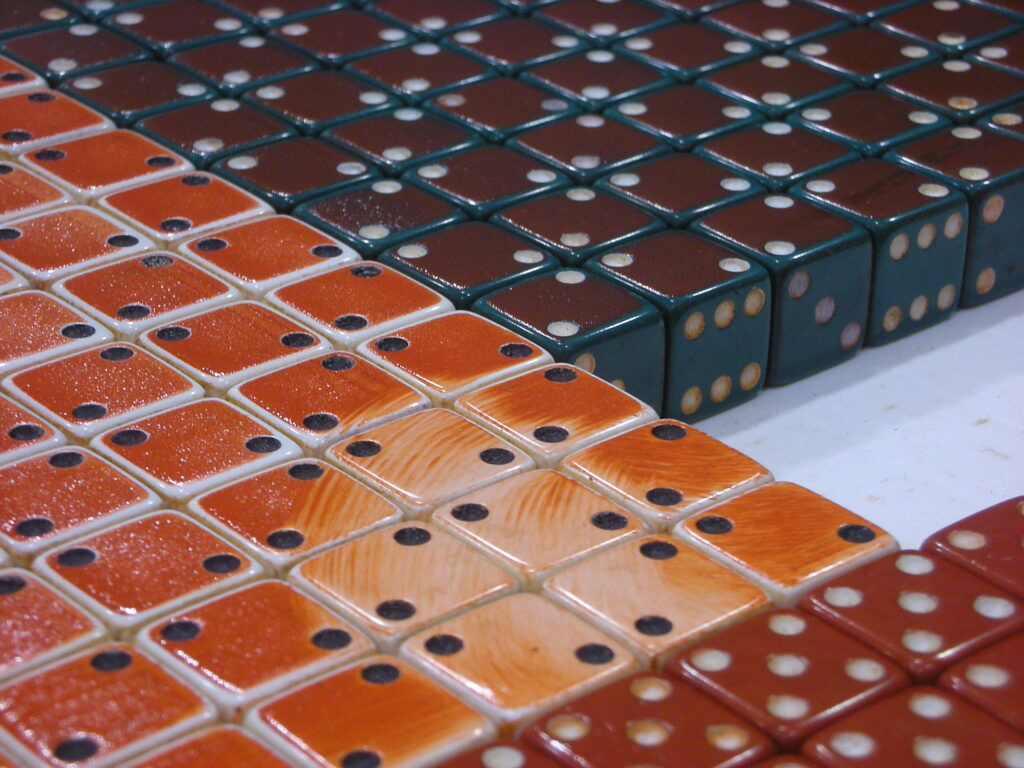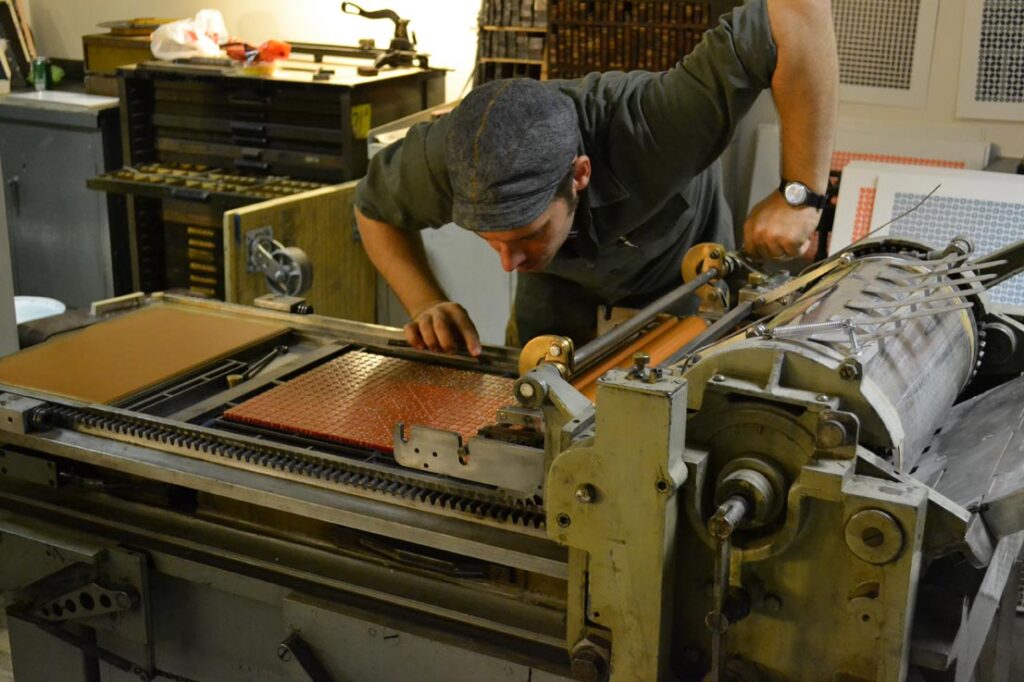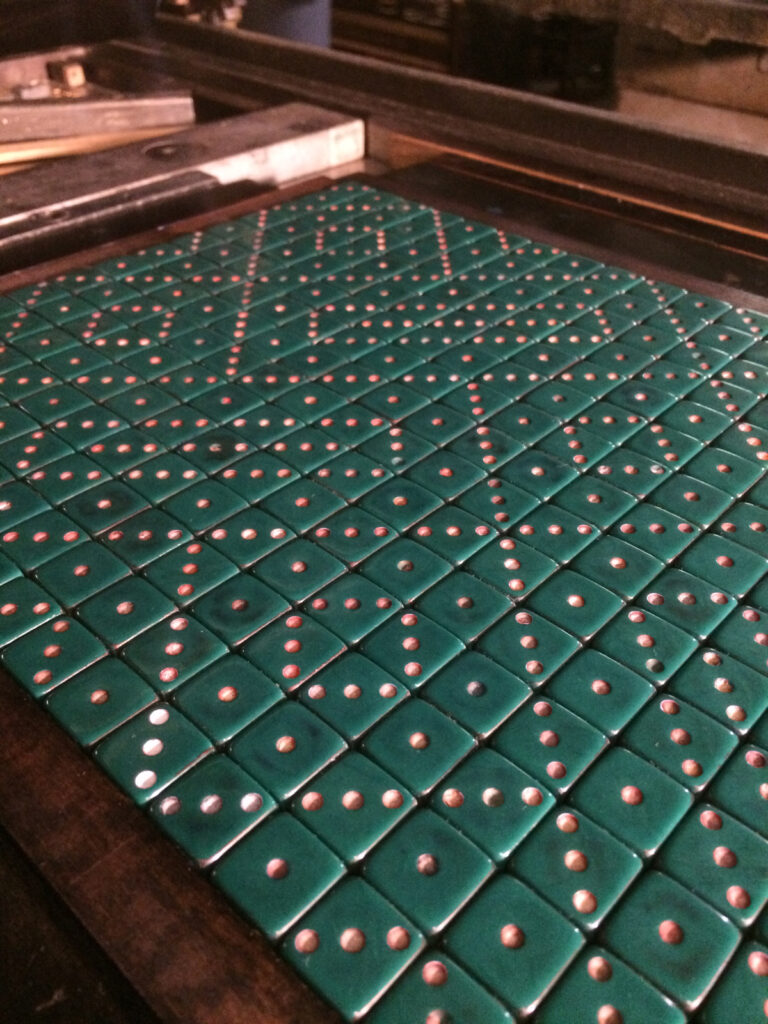Letterpress Dice Prints
After spending years doing traditional letterpress work using hand-set typography and carved blocks to create posters and various other kinds of ephemera, I branched out to art that utilized other materials on the presses. Choosing minimal elements, and printing directly from physical objects on press, I began to make designs that captured interactions of simple shapes on the page. These prints don’t rely on typography to make a reading and be understood. Rather than forming distinct pictures or specific representations these instead are attempts to capture a sense of things being briefly bound in new relationships with each other. Presentations of these printed situations are meant to investigate the subtle moments where things may shift in the mind of the observer to find a when and where that they can almost become seen as something else. Efforts are made though to stop right there and just render that delicate brink of understanding.
An ongoing series of work involves printing with large numbers of classic six sided dice. The dice are held together tightly on the bed of a printing press while a thin layer of ink is applied to their upper faces, impressions then are made by rolling paper across the total array. After printing each design, the same set of dice are cleaned, tumbled and reset into a new composition for the next edition. Sometimes chance takes over and random rolls of the die can come into play, and other times elaborate patterns and structures are meticulously set into place. A viewer might start making intuitive considerations of things, as they find a perceived tension between a field of sixes that comes right up to a field of fives. I am fascinated by the idea of lattices that work through and against another. Common dice are used because they are such a familiar object for most people, and it is rather hard to find someone who hasn’t held one. Viewers can be mesmerized by patterns they see, and hopefully also be totally at ease with them; maybe even be somewhat able to vicariously handle the very elements used to create the artwork. Discussions around these prints often span from textile design and cellular structures, down to subatomic notions, and into matters of order, chaos, and fate.
– B.Baker



